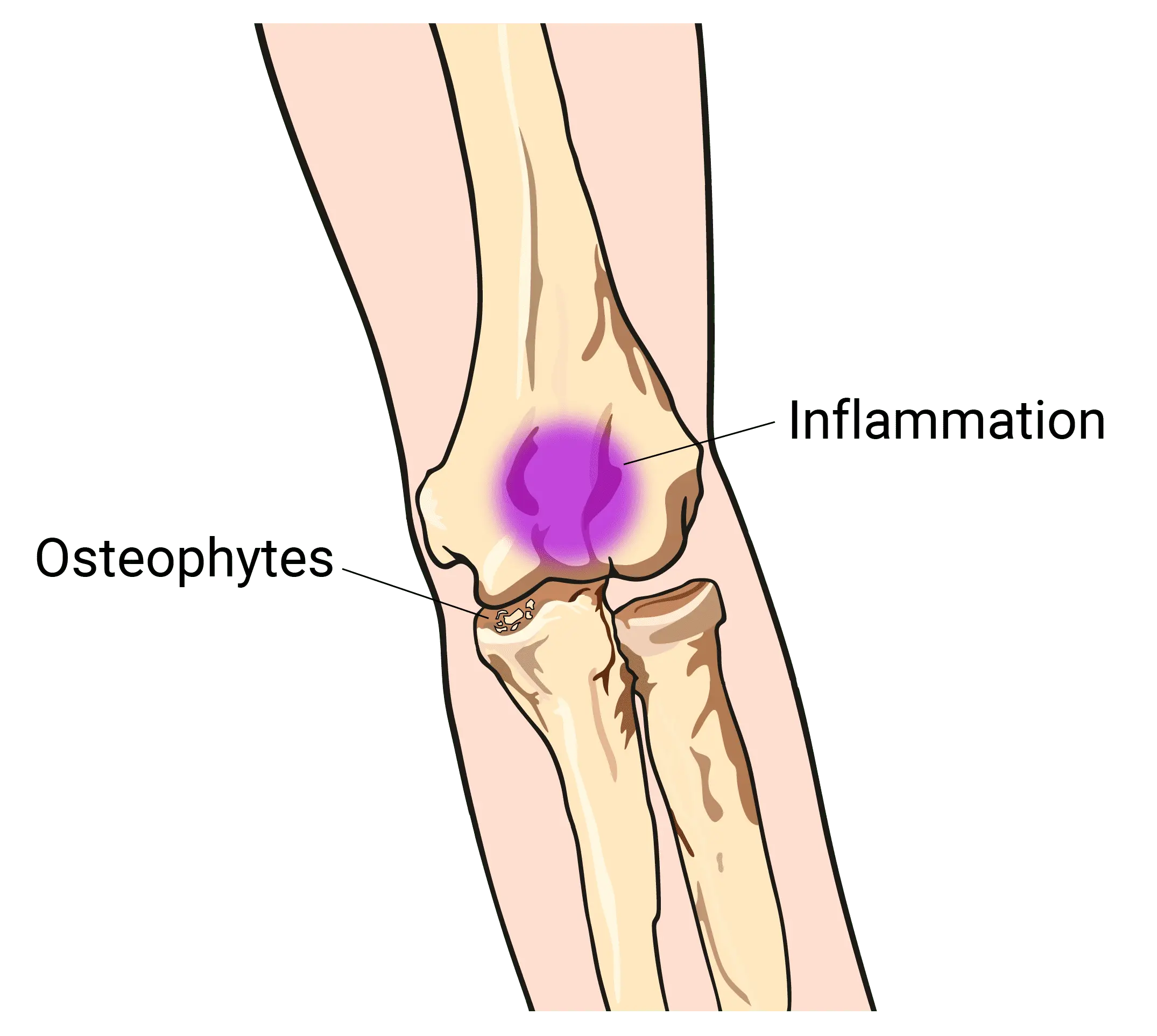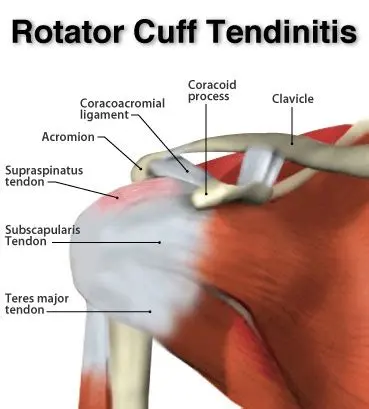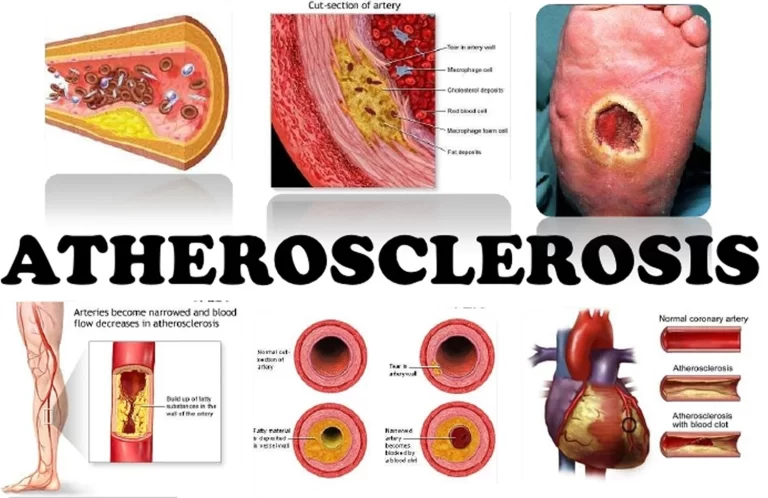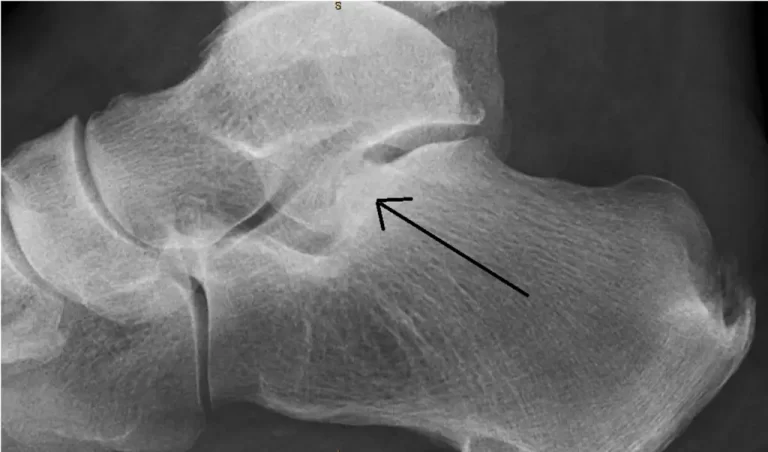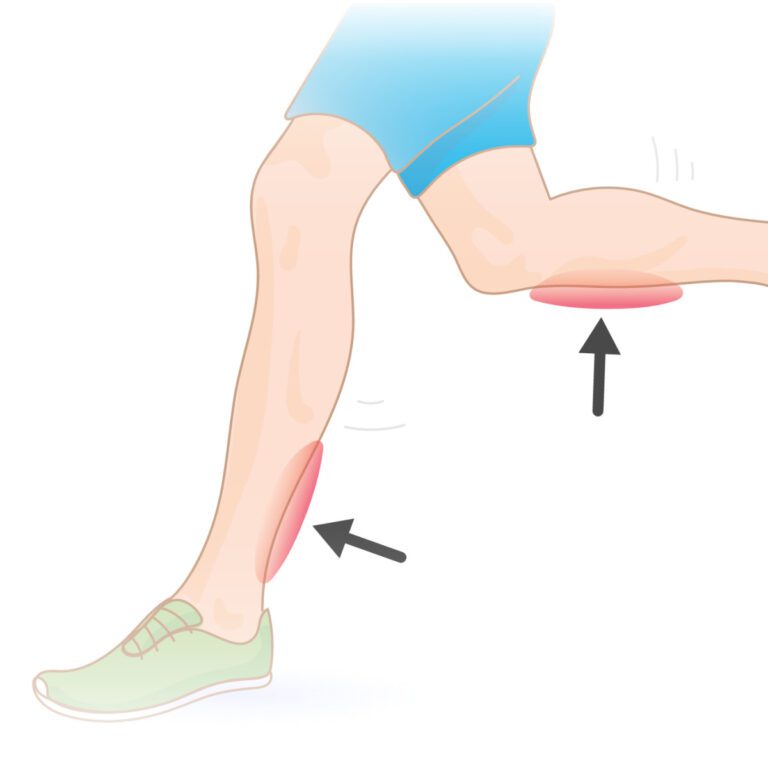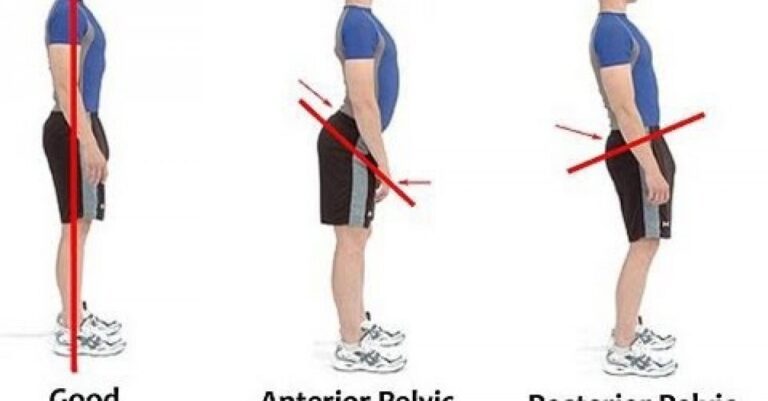Posterior Impingement of the Elbow
Table of Contents
What is the Posterior Impingement of the Elbow?
Posterior impingement of the elbow is a relatively uncommon but significant condition that affects the joint’s posterior structures, leading to pain and a restricted range of motion. It primarily occurs in athletes engaged in repetitive throwing or overhead activities, such as baseball players, tennis players, and gymnasts. The impingement arises when the soft tissues, such as the olecranon process and the olecranon fossa of the humerus, become compressed during specific movements, causing irritation and inflammation.
Posterior elbow impingement damages the cartilage and soft tissue structures at the elbow joint’s posterior side (back) by compressing and tearing them. Overusing the elbow and repeatedly forceful extensions are the two main causes of impingement.
The soft tissue structures at the back of the joint have compressed when the elbow is fully extended. When these compressive pressures become excessive, they may result in inflammation and injury to the soft tissue and/or cartilage towards the back of the joint, causing elbow impingement. Bony spurs may form inside the joint and contribute to the aggravation of the impingement. Additionally, ulnar collateral ligament insufficiency or congenital ligamentous laxity can result in impingement.
Baseball, football, volleyball, and tennis players, as well as people who engage in strenuous exercise and a lot of bench pressing, are more likely to experience posterior impingement of the elbow.
Anatomy of the Elbow:
The elbow is a hinged joint that is made up of three bones: the humerus, ulna, and radius. The ends of the bones are cartilage-covered. Cartilage has a rubbery quality that permits joints to glide easily against one another while also absorbing trauma. The ligaments that make up the joint capsule keep the bones together. A joint capsule is a fluid-filled sac that surrounds and lubricates the joint.
The two important ligaments of the elbow are the medial collateral ligament (on the inside of the elbow) and the lateral collateral ligament (on the outside of the elbow). These ligaments, which hold the humerus and ulna together tightly, are the principal source of support for the elbow. The annular ligament, a third ligament, holds the radial head tightly against the ulna.
Tendons connect the muscle to the bone in your elbow. The biceps tendon, which connects to the biceps muscle on the front of your arm, and the triceps tendon, which connects to the triceps muscle on the back of your arm, are the most essential tendons of the elbow.
Forearm muscles traverse the elbow and join the humerus. The lateral epicondyle is the outside (lateral) hump just above the elbow. The majority of the muscles that straighten the fingers and wrist attach to the medial epicondyle, a bulge on the inside of the arm just above the elbow.
All of the nerves that run down the arm pass across the elbow. At the shoulder, three major nerves connect the radial nerve, the ulnar nerve, and the medial nerve. These nerves are in charge of signaling your muscles to work as well as relaying feelings like touch, pain, and temperature.
What are the Causes of Elbow Impingement?
Some of the conditions that can cause posterior elbow impingement are as follows:
- Synovitis is an inflammation of the synovium, a joint membrane.
- Bursitis is an inflammation of the bursae, which are fluid-filled sacs that cushion joints.
- Bone spurs are abnormal bony protrusions that develop along the ends of bones.
- Joint inflammatory disease
- Rupture of soft tissues, and cartilage
- Stiffening of tendons, muscles, and ligaments
What are the Sign and Symptoms of Elbow Impingement?
Patients with suspected elbow impingement usually complain of pain in the posterior elbow. This elbow pain frequently increases during or after vigorous activity. Other frequent elbow impingement issues include:
- Elbow joint inflammation
- Reduced range of motion
- Stiffness in the elbow joints
- Bruising and tenderness over the back of the elbow
- Excessive fluid buildup in the elbow joint
- A “catching” or “locking” sensation when moving the elbow joint
- With elbow joint movement, a “crackling” or “popping” sound is occasionally heard.
- Having trouble straightening or extending the afflicted elbow
How is Elbow Impingement Diagnosed?
- A plain radiograph: Plain radiographs, particularly axial views, indicate osteophytes on the olecranon or the boundaries of the posteromedial fossa. Dynamic radiography with valgus stresses applied could show joint instability.
- Ultrasound: Ultrasound is useful to assess the integrity of the ulnar collateral ligament and laxity, particularly allowing for real-time dynamic examination.
- CT-Scan: CT is better at identifying osteophytes and intra-articular loose bodies.
- MRI: MRI may be performed with or without intra‐articular contrast and can identify underlying chondral injury, synovitis, or underlying edema-like lesions.
Physical Examination Test:
Extension impingement test :
The Extension impingement test is used to assess pain in the medial olecranon without causing instability.
The purpose of the Extension impingement test is as follows:
The examine used valgus stress to the elbow while extending & flexion repeatedly.
The test is then performed without the valgus stress while the posteromedial olecranon is palpated for tenderness.
Result of the Extension impingement test :
Palpation identifies tender impingement due to instability from discomfort over the medial olecranon without instability.
What is the Treatment for Elbow Impingement?
Non-Surgical Treatment:
- Some people with elbow impingement heal positively with appropriate physiotherapy treatment. The success rate of treatment is majorly dictated by patient compliance.
A critical component of treatment is that the patient avoids performing any activity that aggravates their pain (a brace or protective tape may be required). - Activities that put a lot of strain on the elbow, such as throwing or hyperextension, should also be avoided. Resting from irritating activities allows the body to begin the healing process without causing additional tissue damage. Once the patient can perform these tasks without pain, a gradual return to these activities is recommended as long as symptoms do not increase.
- Ignoring symptoms or adopting a ‘no pain, no gain’ attitude will almost certainly result in the problem becoming chronic. Immediate, suitable treatment is required in individuals with elbow impingement to ensure a speedy recovery. When a problem becomes chronic, healing slows significantly, resulting in much longer recovery durations and an increased probability of a negative outcome.
- In the initial phase of damage, patients with elbow impingement should follow the R.I.C.E. Regime. The R.I.C.E. protocol is beneficial in the first 72 hours after an injury or when inflammatory signs are present (e.g., morning pain or pain with rest). Resting from aggravating activities (which may include the use of a brace or protective tape), regular ice, the use of a compression bandage, and keeping the arm elevated are all part of the R.I.C.E. routine. Anti-inflammatory drugs may help speed healing by decreasing the discomfort and swelling associated with inflammation.
- Patients with this illness should undergo pain-free flexibility and strengthening activities as part of their therapy to ensure the greatest possible outcome. The treating physiotherapist can recommend which exercises are best for the patient and when they should begin.
- In the last phases of treatment for this disease, a gradual return to activity or sport according to instructions by the treating physiotherapist is essential. Throwing technique correction is especially crucial in cases where incorrect throwing biomechanics have contributed to the development of the problem. Upon return to sport, the use of taping or a protective brace may also be required to reduce the probability of recurrence.
- In patients who do not respond effectively to rehabilitation, corticosteroid injection or arthroscopic surgery may be advised to treat or reduce the structures causing the impingement.
Physiotherapy for impingement of the elbow:
Physiotherapy is essential in all patients with this disease, regardless of whether their condition is addressed conservatively or surgically, to speed the healing process and achieve an optimal outcome. Treatment may include:
- Soft tissue massage
- Stretches
- Joint mobilization
- Electrotherapy (for example, ultrasound)
- Anti-inflammatory suggestions
- Taping
- Bracing
- Treatment with ice or heat
- Activities for increasing flexibility and strength
- Education
- Tips on activity modification
- Sport technique improvement
- A program of a gradual return to activity
Exercises for elbow impingement:
The following exercises are commonly prescribed to patients suffering from this medical condition. You should talk about the suitability of these exercises with your physiotherapist before to beginning them. Generally, they should be conducted 3 times daily and only if they do not cause or increase symptoms.
- Elbow Bending to Straighten: Bend and straighten your elbow as much as you can without pain. If the symptoms do not get worse, repeat 10 times.

- Rotation of the Forearm: Begin with your elbow bent to 90 degrees at your side. Turn your palm up and down as far as you can without experiencing pain. If the symptoms do not get worse, repeat 10 times.

- Theraband Bicep Curl: Begin this strengthening exercise by tying a resistance band around your feet and your hands, as shown. Your back should be upright, as should your elbows. Slowly tighten your biceps by bending your elbows against the resistance band. As long as symptoms do not get worse, repeat 10 to 30 times.
Surgical Treatment:
- Arthroscopy: Your doctor will be able to heal damage to the soft tissues of the elbow with this treatment. Arthroscopy is a minimally invasive surgical procedure that includes making small keyhole incisions in the elbow joint to insert a fiber-optic tube with a tiny camera called an arthroscope and miniature equipment. The camera displays photos of the affected area on a monitor, and the doctor is instructed by these images to do the necessary repair.
- Open Surgery: A traditional open surgery approach would require a major surgical incision to be made to repair the affected area if the injury is large and complex. Open surgery has been used to remove osteophytes (bone spurs) or joint debridement (removal of diseased cartilage or bone).
Summary:
Posterior impingement of the elbow refers to a condition where the structures at the back of the elbow joint become compressed or irritated, causing pain and a limited range of motion. This condition commonly affects athletes, particularly those involved in sports that require repetitive throwing motions, such as baseball or tennis.
If conservative measures fail to provide relief, or in cases where there are significant structural issues like large bone spurs or loose bodies, surgical intervention may be necessary. The specific surgical procedure will depend on the underlying cause and may involve removing the impinging structures, repairing damaged tissues, or addressing any anatomical abnormalities. Following surgery, a period of rehabilitation and physical therapy is essential to regain strength, restore range of motion, and facilitate a full recovery.
It’s necessary to consult with a healthcare professional for an accurate diagnosis and appropriate treatment plan if you suspect you have posterior impingement of the elbow or are experiencing persistent elbow pain.
FAQs:
Can posterior elbow impingement be prevented?
While it may not be possible to completely prevent posterior elbow impingement, some measures can be taken to reduce the risk. These include maintaining proper technique and form during sports or weightlifting activities, gradually increasing the intensity and duration of training, incorporating regular strength and conditioning exercises to improve muscle balance and joint stability, and listening to the body’s signals of pain or discomfort to avoid overuse injuries.
How long does it take to recover from posterior elbow impingement?
The recovery time can vary depending on the severity of the impingement and the chosen treatment approach. In mild cases, recovery may take a few weeks with appropriate rest and therapy. More severe cases or cases requiring surgery may take several months for a full recovery.
Is it safe to continue playing sports with posterior elbow impingement?
It is essential to consult with a healthcare professional before deciding to continue playing sports with a posterior elbow impingement. In mild cases, rest and conservative treatments might allow you to return to sports gradually. However, in more severe cases, continuing to play sports could exacerbate the condition and may lead to further damage. The decision should be based on individual circumstances and professional advice.
Are there any complications associated with posterior elbow impingement?
If left untreated, posterior elbow impingement can lead to chronic pain, limited range of motion, and difficulty in performing daily activities and sports. It may also lead to other complications like the development of osteoarthritis in the elbow joint over time.

